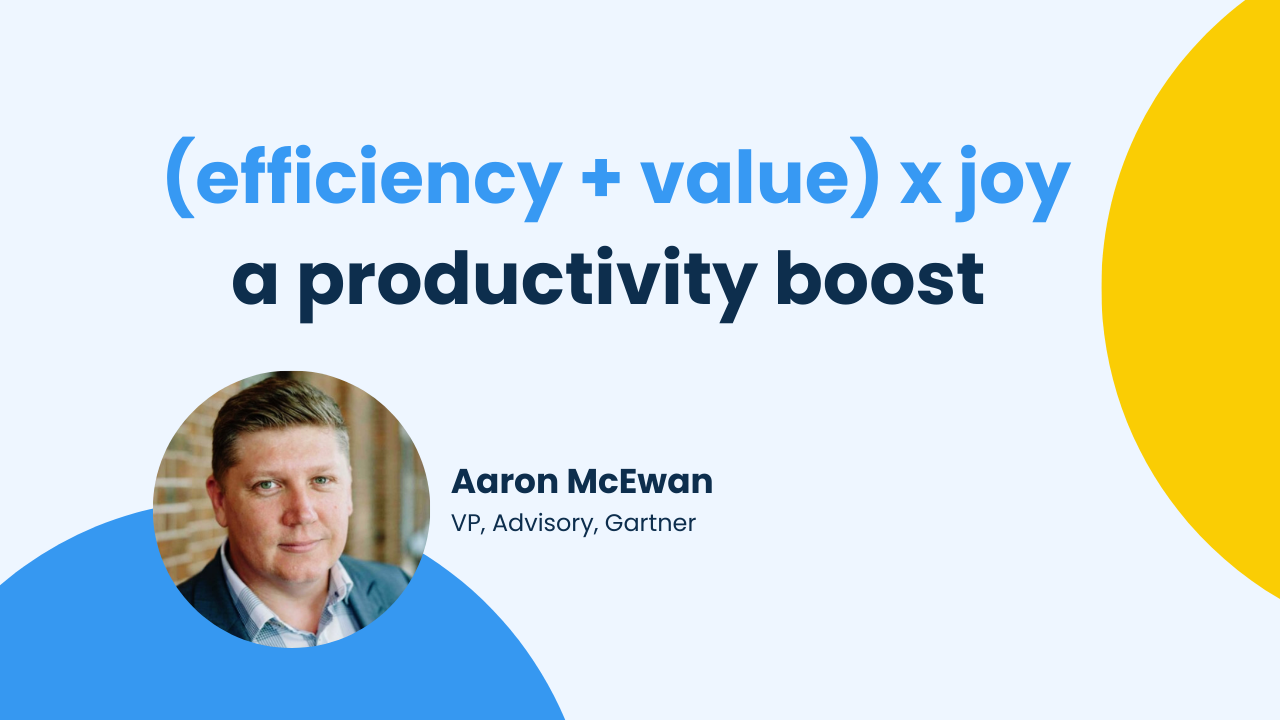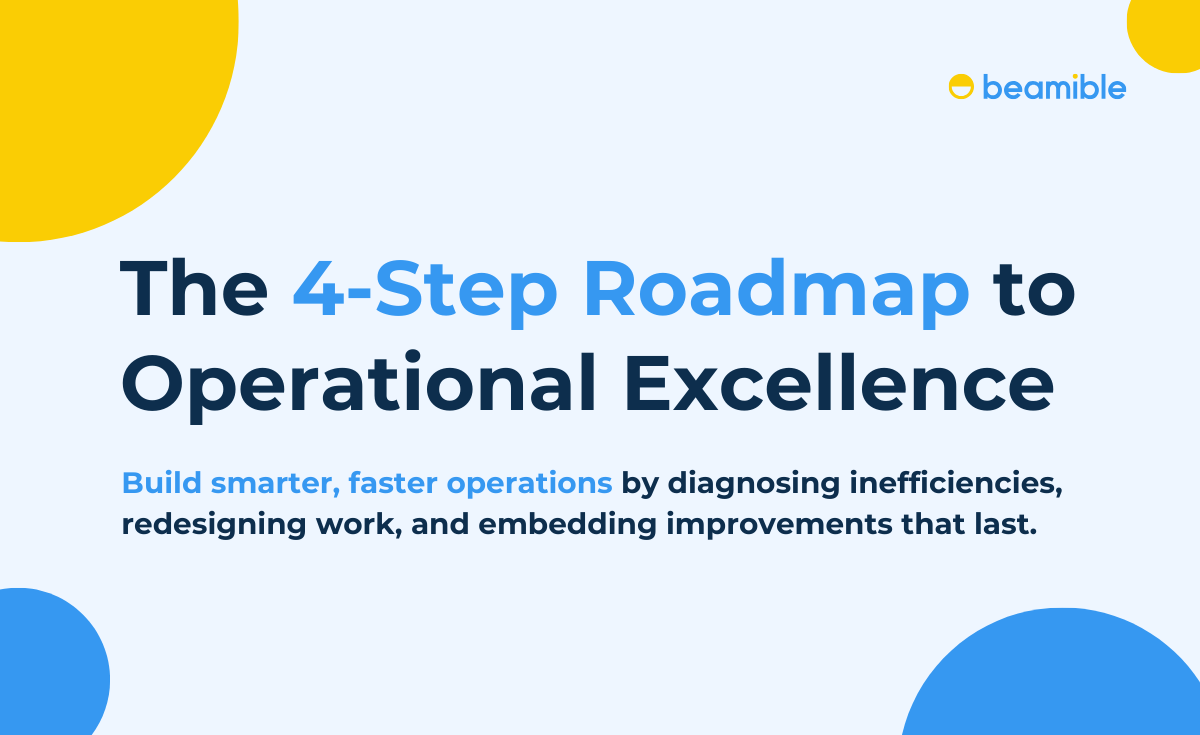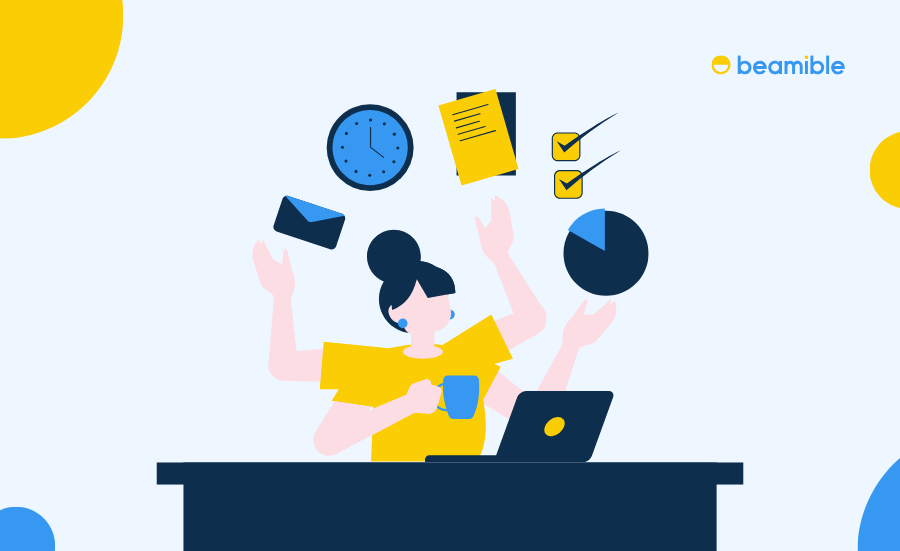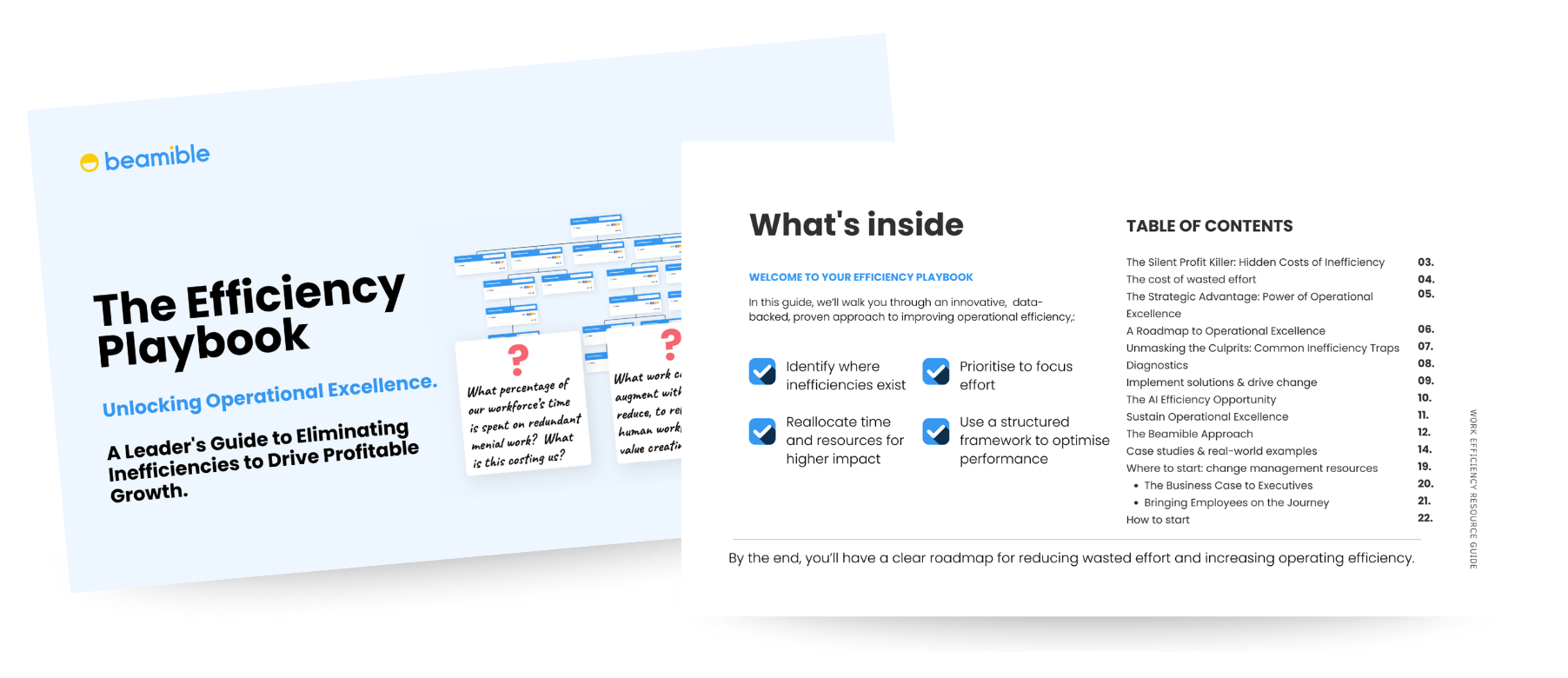Introduction: why productivity needs a new formula
Most teams still treat productivity as “do the same work faster”. That’s only half the story.
Productivity = efficiency + value creation.
Use AI to remove drudgery and reduce “work about work”. Use humans to invent, decide, connect, and create new value.
The joy × value test
Ask two questions of every task:
- Does it bring joy? (energy, pride, flow)
- Does it bring value? (customer impact, quality, revenue, risk reduction)
Then act accordingly. If a task brings neither joy nor value, automate it or eliminate it. If it creates value but not joy, redesign it—break it into steps, share parts of it with AI co-pilots, or improve the workflow so it’s less draining. If it brings joy and value, protect it for humans and make more space for it. If it brings joy but little value, reframe it, shorten it, or stop it.
The aim isn’t to automate the joy out of work. It’s to clear the path so people have the energy for the meaningful bits.
Automation raises the bar: work gets harder
When technology strips out repetitive tasks, the tasks left behind are the ones that demand judgement, creativity, and emotional effort. That raises the cognitive load and the emotional load.
People spend more time synthesising conflicting inputs, mediating trade-offs, and making calls where there is no single right answer. That kind of work needs protected focus, not constant context switching.
What this means day to day
- Replace status meetings with short written updates. Keep live meetings for decisions, coaching, or blockers.
- Protect deep-work blocks of 60–120 minutes. Two high-quality blocks in a day will move more value than a wall of calls.
- Plan work around natural energy rhythms. Most people have 90-minute focus cycles. Design the day to match that.
- Bundle collaboration into clear windows so colleagues know when you are interruptible and when you are not.
Signals that complexity is biting
- People say they are “always on” yet big outcomes slip.
- Work moves forward only in meetings. Outside meetings, it stalls.
- Escalations rise because decision rights are unclear.
- The best work happens out of hours when no one is Slacking.
A sample weekly rhythm
- Monday morning: align on outcomes, not tasks. What must be true by Friday for us to say this was a good week.
- Tuesday to Thursday: two deep-work blocks per day, one collaboration window, one short stand-up.
- Friday: demo the work, capture lessons learned, and reset the backlog.
How humans flourish (and produce)
Humans do their best work with connection, autonomy, mastery, and purpose. Each has a practical translation.
Connection
- Psychological safety: people can share half-baked ideas and real risks without being punished.
- Useful networks: it is easy to find the person, doc, or decision that unblocks the work.
- Manager behaviours: ask, “What feels stuck and who can I connect you with to unstick it.”
Autonomy
- Clear outcomes and decision boundaries, then space to choose the path.
- Control over sequence, method, and schedule within agreed guardrails.
- Manager behaviours: swap “How is it going” for “What decisions are in your way and what authority do you need.”
Mastery
- Real practice on meaningful problems beats courses in a vacuum.
- Time and budget for learning tied to the work at hand, not generic certificates.
- Feedback loops: fast, specific, and safe to act on. Make feedback part of the cadence, not an annual event.
Purpose
- Line of sight from today’s tasks to customer outcomes and strategy.
- Stories that show how the work changed something in the real world.
- Manager behaviours: start meetings with “what outcome are we trying to move” rather than a list of activities.
How to check if people are flourishing
- Ask one monthly question at the task level: “Did this work give you energy or drain it.” Track the trend.
- Track time spent on value-creating tasks vs admin. Aim to shift at least 10–20 percent within a quarter.
- Watch voluntary collaboration. Are people inviting others in early, or hiding work until it is perfect.
From skills to tasks: build task intelligence
Skills are labels. Tasks are the work. In an AI and agent world, decisions about who or what should do the work happen at the task level. You need a living, shared picture of tasks to deploy humans and AI well.
What to capture for each task
- The purpose and the outcome it supports.
- Frequency and typical time.
- Inputs, dependencies, and common blockers.
- Quality bar: what “good” looks like.
- Energy or joy score from the people who do it.
How to build the picture without grinding work to a halt
- Start with one team. Run a 60-minute workshop to list the top 30–50 tasks from the last 30 days.
- Use calendar and doc history to validate time and frequency. Do light sampling for a week rather than heavy time sheets.
- Interview two high performers and two newer team members. You will surface blind spots the manager cannot see.
- Review monthly. Add new tasks, merge duplicates, and retire tasks you no longer need.
How to use the data
- Run the joy and value test on each task.
- Automate or eliminate low-joy, low-value items first for a fast win.
- Redesign high-value, low-joy tasks by breaking them into steps and pairing the repetitive steps with AI co-pilots.
- Protect high-joy, high-value tasks. Remove admin gravity around them so people can do more of that work.
BYOB (bring your own boss) is coming
Personal AI coaches will soon feel like a brilliant mentor: they know your preferences, your goals, and your rhythms. Corporate AI will exist too, but it will optimise for enterprise priorities. People will bring their personal coach to work because it helps them produce.
Benefits to harness
- Better planning and timeboxing. Your coach suggests when to attempt hard work based on your past patterns.
- Faster navigation. Your coach remembers where the right doc or person is and drafts the outreach.
- Nudges that prevent waste. Your coach flags when a meeting has no decision or outcome.
Risks to manage
- Data leakage if people paste sensitive content into external tools.
- Advice quality drifting if a system lives in a closed loop with stale inputs.
- Unequal access if policies are unclear and people fear using helpful tools.
Simple policy moves
- Plain-language rules on what can and cannot leave the company boundary.
- Approved tools list and a pathway to request new tools.
- Audit logs where feasible, focused on patterns, not policing.
- Outcome-based management so people are measured on results, not keystrokes.
Integration patterns that keep data safe
- Use a broker or gateway that strips sensitive fields before prompts leave your systems.
- Limit permissions by default and grant temporary access for specific tasks.
- Keep human review in the loop for any customer-facing or high-stakes output.
Operating model for HR and leaders
Map the work
Create and maintain a live task inventory per team. Give it an owner. Review it monthly. Tie tasks to outcomes so it is obvious which tasks move the needle.
Decide with the matrix
Run the joy and value test on each task. Pick quick automations, redesigns for high-value work, and the tasks to protect. Prioritise by effort vs impact.
Redesign the environment
Protect deep-work time. Move routine updates to async posts. Set clear norms: default meetings to 25 or 50 minutes, write a purpose and decision for every meeting, and keep a decision log.
Set AI guardrails
Write simple guidelines for safe use. Cover data handling, tool selection, and review points. Identify which outputs must be reviewed by a human. Pair any rollout with examples of good and bad prompts to speed up learning.
Lift manager capability
Teach managers to coach. That means asking better questions, connecting people to resources, giving fast feedback, and clearing decisions out of the way. Reward managers for outcomes and team health, not just delivery volume.
Measure what matters
Track cycle time to value, quality, and customer impact. Track the share of time spent on value-creating tasks. Track energy or joy at task level monthly. Look for movement, not perfection.
Who does what
- HR: build the playbook, coach leaders, and maintain the People metrics.
- Team leaders: own the task inventory and the weekly rhythm.
- IT and data: set safe AI patterns and approved tools.
- Legal and risk: keep the guardrails clear and sensible.
Risks and anti-patterns to avoid
Micromanagement and surveillance
These drain energy and push people to optimise for looking busy. Replace activity tracking with outcome tracking and decision clarity.
Meeting bloat and status theatre
If a meeting has no decision to make, move it to an async update. Keep a shared decision log so people can follow progress without calling another meeting.
Closed AI loops
Systems that never see new inputs get dull. Periodically test AI outputs against external benchmarks. Refresh prompt libraries and example sets.
Automating the joyful, differentiating work
If a task gives people energy and creates value, keep it human and clear friction around it. Your differentiation lives there.
The hopeful future
Think of AI as part of our extended mind. It helps us reach knowledge faster, see patterns sooner, and keep focus where it counts. When boards see numbers that show flourishing humans create more value, priorities shift: more time in meaningful work, fewer hoops to jump through, and safer, smarter use of AI.
A simple dashboard can make this visible: cycle time to value, quality, time in value tasks, and the monthly energy trend at task level. When those move together, the story writes itself.
The bottom line: use AI for speed, humans for value
Real productivity is the union of efficiency and value creation. Use the joy × value test on every task to decide what AI should handle and what humans should own.
If it brings neither joy nor value, automate or eliminate it. If it creates value but drains energy, redesign it and pair the repeatable steps with co-pilots. If it delivers both joy and value, protect it for people and clear the admin that gets in the way.
Make it practical and small to start. Map the work for one team, build a living view of their top tasks, and link each to outcomes. Redesign the environment so complex, human work can flourish: fewer status meetings, clear decision rights, deep-work blocks, and simple guardrails for safe, sensible AI use.
The goal: a visible move of time into high-joy, high-value work—then scale what works to the rest of the organisation.





